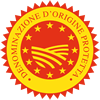Description
The Pays d'Auge PDO is a cider produced from a traditional variety of cider apples.
Production Area
The Pays d'Auge PDO production area falls in the location with the same name Pays d'Auge, between the districts of Calvados, Eure and Orne, in the Lower-Normandy and Upper-Normandy regions. The Cambremer area is in the heart of the Pays d'Auge.
Production Method
apples are harvested and chopped or grated to a pulp which is stored in an open tank for a period of time known as cuvage, or rather fermentation, after which it undergoes a pressing process. The fining of the musts is mandatory and can only be obtained with the separation of the clear part of the must from its lees and the suspended solids. It is fundamental that the fermentation of must is performed slowly. After the fining process, the must is bottled where the last part of the production process takes place. Sweetening, pasteurization and gasification are prohibited.
Appearance and Flavour
Pays d'Auge PDO is a cider with palatable fruity aromas, a low acidity in perfect balance with the sweetness and has an amber colour and a characteristic flavour.
History
Pays d'Auge PDO boasts an antique reputation. Julien Le Paulmier, doctor of King Henry IV of Norman origin, mentioning in his papers on wine and cider, De Vino et Pomaceo, the peculiar character of the Pays d'Auge cider and the qualities of certain varieties of apples that are still grown today. The reputation of the product reached its peak at the end of the 19th century, when it became the subject of a specific assessment in Paris, and it is still today one of the most renowned.
Gastronomy
The Pays d'Auge PDO must be stored in cool places such as cellars that are ideal and is drunk fresh or cold at a temperature which can vary from 7°C to 10°C. It is generally drunk locally at meal times but goes particularly well with light fish based dishes. It is ideal with seafood, especially hot oysters, but also combines well with poultry. Sometimes it is used to tenderize the cooking of roasts and is often matched with fresh Normandy cheeses. Particularly suitable and used to accompany or to make desserts such as Crêpes au cidre Pays d'Auge or Pudding aux pommes et au cidre.
Marketing
The product is sold as Pays d'Auge PDO. It is marketed in glass bottles, very similar to those used for champagne, which can be of various shapes and sizes provided they ensure the resistance to the internal pressure caused by the last stage of fermentation that takes place after bottling.
Distinctive Features
The particular flavour and peculiar organoleptic qualities of Pays d'Auge PDO are due to the pedoclimatic conditions of the Pays d'Auge area and the surrounding territory of Cambremer making them particularly suitable for the growing of apple trees, and over the centuries have allowed selecting varieties of apples specific to these geographic areas.






